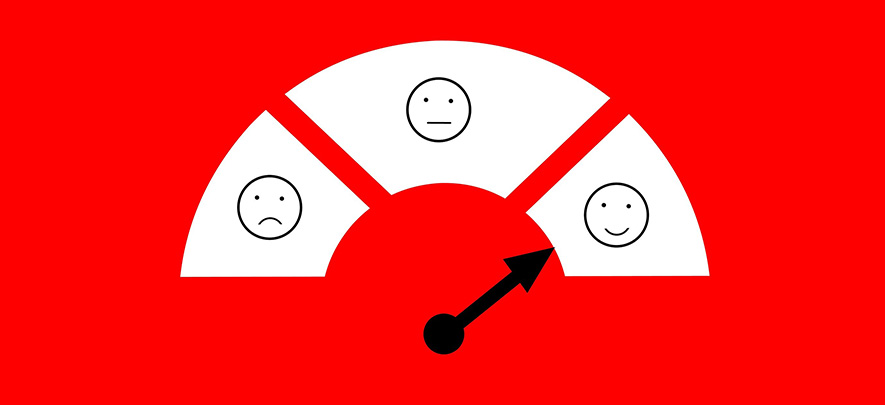

COVID-19 SME Forum
GlobalLinker and Wadhwani Advantage have together partnered with industry experts and leaders to help your business be better prepared

268 week ago — 6 min read
If there’s one thing customers everywhere care about – it is being served. No matter the industry, product or service, every customer is looking for solutions to their challenges, answers to their questions and support for their problems. As a result, the words ‘customer support’ holds a wealth of meaning that good companies understand whereas others fail to.
However, the current Coronavirus crisis, which has overwhelmed businesses and lives everywhere, has forced a rethink of these words. Where earlier, companies would focus on examining buyer journeys and analysing customer satisfaction metrics, now they are realising that they need to shift their focus to understanding what customers really need and then find ways to address those needs with empathy, care and concern.
As a result of the crisis, consumer behaviour patterns are likely to change in the long term and businesses need to be prepared for this. In this ‘new normal’, the only way they can succeed is by always keeping a real-time pulse on changing customer preferences and innovating their offerings or business models to adapt to these new contexts.
Now, customer-forward companies need to adopt new customer experience (CX) practices in order to address customer concerns, be more resilient and prepare for success in the post-Coronavirus era.
What are these 4 practices?
Now more than ever, customers are looking for more support, more information and more care from the brands they rely on and trust. In present uncertain times when everything is so overwhelming and anxiety-inducing, they want to feel safe and cared for. That’s why it’s important for companies to become socially responsible and look beyond their own bottomline to make their customers a priority.
One way to do this is to reach out to their customers and offer genuine, ‘non-salesy’ support. By doing this, companies create better customer experiences in the short term and build positive relationships for the long term – relationships that will last long after the crisis has ended.
Also read: 5 easy ways to grow your business network on GlobalLinker
Coronavirus has forced a shakeup of normal life. Even simple activities like a meal at a restaurant, a trip the grocery store or a visit to a mall is now difficult (and in many countries, even banned). But even though many avenues of shopping, eating and leisure activities are now unavailable, the needs still exist. Companies that adapt to help their customers meet these needs without hassle will be able to create a space in their hearts and minds, not just now but in future as well.
Can you deliver your service digitally? Provide an ecommerce shopping option? Offer a longer credit period or some kind of discount? Or go to the customer instead of having them come to you (aka home delivery)? If you can act quickly and update your delivery model to help your customers navigate the crisis safely, you will establish a strong advantage once the crisis is over compared to your competitors.
Tough times don’t last, tough people do. The Coronavirus crisis is catastrophic today, but it will pass. But are you prepared for the post-Corona world? Consumer preferences will probably change and lead to behavioural shifts that will likely outlast the immediate crisis. Will you be able to keep up? Will you adopt a customer-centric mindset or will your focus turn inward?
Leading companies will find new ways to deliver great customer experiences even if they have to cut costs. Another way of saying this is that they will find savings without sacrificing experiences. They will make smarter operational trade-offs and migrate to newer ways of conducting business (e.g. digital channels or self-service kiosks) to boost both savings and customer satisfaction.
If you want to continue to create value for your customers in a post-Corona world, you need to understand changing market dynamics, identify new pain points for your customers and use this information to invest in agile innovation efforts.
How can you keep a real-time pulse on changing customer preferences? Surveys are passé so try social media instead. Take part in conversations about your brand and get ready to answer customers’ questions. You can also solicit and collect feedback from your employees. Their inputs can help you gauge how customers are feeling, reacting and behaving.
But collecting this information should be just one part of your customer experience strategy. You also need to find ways to fulfill new consumer needs. This means building functional agility, rethinking priorities, re-examining your innovation pipeline and accelerating your time to market.
Also read: An unprecedented challenge, also an opportunity for SMEs to do unprecedented things
Owing to the overwhelming challenge of Coronavirus, the definition of customer experience has changed. And this change is most likely permanent. Only those businesses who demonstrate genuine caring for their customers and make an effort to innovate will be able to build stronger customer relationships that will outlast the crisis. Everyone else will just fall by the wayside and become just a memory.
Which type of business will you be?
Image source: pixabay.com
To explore business opportunities, link with me by clicking on the 'Connect' button on my eBiz Card.
Disclaimer: The views and opinions expressed in this article are those of the author and do not necessarily reflect the views, official policy or position of GlobalLinker.
Posted by
Lion Amir ViraniTech Evangelist| Thought Leader | Social Entrepreneur | Enthusiastic Networker | Speaker| Startup Mentor


COVID-19 SME Forum
GlobalLinker and Wadhwani Advantage have together partnered with industry experts and leaders to help your business be better prepared
Most read this week
Comments
Share this content
Please login or Register to join the discussion